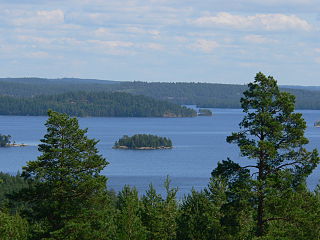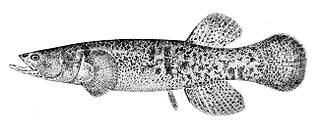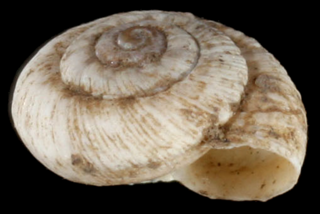Related Research Articles

Beringia is defined today as the land and maritime area bounded on the west by the Lena River in Russia; on the east by the Mackenzie River in Canada; on the north by 72 degrees north latitude in the Chukchi Sea; and on the south by the tip of the Kamchatka Peninsula. It includes the Chukchi Sea, the Bering Sea, the Bering Strait, the Chukchi and Kamchatka Peninsulas in Russia as well as Alaska in the United States and the Yukon in Canada.

The Last Glacial Period (LGP), also known colloquially as the Last Ice Age or simply Ice Age, occurred from the end of the Last Interglacial to the end of the Younger Dryas, encompassing the period c. 115,000 – c. 11,700 years ago.

Endemism is the state of a species only being found in a single defined geographic location, such as an island, state, nation, country or other defined zone; organisms that are indigenous to a place are not endemic to it if they are also found elsewhere. For example, the Cape sugarbird is found exclusively in southwestern South Africa and is therefore said to be endemic to that particular part of the world. An endemic species can also be referred to as an endemism or, in scientific literature, as an endemite.

The Last Glacial Maximum (LGM), also referred to as the Last Glacial Coldest Period, was the most recent time during the Last Glacial Period where ice sheets were at their greatest extent 26,000 and 20,000 years ago. Ice sheets covered much of Northern North America, Northern Europe, and Asia and profoundly affected Earth's climate by causing a major expansion of deserts, along with a large drop in sea levels.

A glacial lake is a body of water with origins from glacier activity. They are formed when a glacier erodes the land and then melts, filling the depression created by the glacier.

In biology, a refugium is a location which supports an isolated or relict population of a once more widespread species. This isolation (allopatry) can be due to climatic changes, geography, or human activities such as deforestation and overhunting.

Sommen is a lake in the South Swedish highlands lying across the border of the provinces of Östergötland and Småland. Situated about 147 metres above mean sea level, the lake has an area of 132 km2 (51 sq mi) and has a maximum depth of 60 metres. The lake is shared between the administrative kommunes of Ydre, Kinda, Boxholm and Tranås and the area around it is sparsely populated.

Betula nana, the dwarf birch, is a species of birch in the family Betulaceae, found mainly in the tundra of the Arctic region.
The Older Dryas was a stadial (cold) period between the Bølling and Allerød interstadials, about 14,000 years Before Present, towards the end of the Pleistocene. Its date range is not well defined, with estimates varying by 400 years, but its duration is agreed to have been around two centuries.

The Oldest Dryas is a biostratigraphic subdivision layer corresponding to a relatively abrupt climatic cooling event, or stadial, which occurred during the last glacial retreat. The time period to which the layer corresponds is poorly defined and varies between regions, but it is generally dated as starting at 18.5–17 thousand years (ka) before present (BP) and ending 15–14 ka BP. As with the Younger and Older Dryas events, the stratigraphic layer is marked by abundance of the pollen and other remains of Dryas octopetala, an indicator species that colonizes arctic-alpine regions. The termination of the Oldest Dryas is marked by an abrupt oxygen isotope excursion, which has been observed at many sites in the Alps that correspond to this interval of time.

The Alaska blackfish is a species of freshwater fish in the esocid family (Esocidae) of order Esociformes. It inhabits Arctic regions of Alaska as well as Siberia and the Bering Sea islands.

Last Glacial Maximum refugia were places (refugia) in which humans and other species survived during the Last Glacial Period in the Northern Hemisphere, around 25,000 to 20,000 years ago.

The Weichselian glaciation was the last glacial period and its associated glaciation in northern parts of Europe. In the Alpine region it corresponds to the Würm glaciation. It was characterized by a large ice sheet that spread out from the Scandinavian Mountains and extended as far as the east coast of Schleswig-Holstein, northern Poland and Northwest Russia. This glaciation is also known as the Weichselian ice age, Vistulian glaciation, Weichsel or, less commonly, the Weichsel glaciation, Weichselian cold period (Weichsel-Kaltzeit), Weichselian glacial (Weichsel-Glazial), Weichselian Stage or, rarely, the Weichselian complex (Weichsel-Komplex).

Xerocrassa geyeri is a species of air-breathing land snail, a terrestrial pulmonate gastropod mollusk in the family Geomitridae. It is also often known as Trochoidea geyeri.
In biogeography and paleontology, a relict is a population or taxon of organisms that was more widespread or more diverse in the past. A relictual population is a population currently inhabiting a restricted area whose range was far wider during a previous geologic epoch. Similarly, a relictual taxon is a taxon which is the sole surviving representative of a formerly diverse group.
The northern and southern hemispheres of the earth have a dynamic history of advancing and retreating ice sheets. The glacial and interglacial periods are linked to regular eccentricities in the Earth's orbit and correspond to approximately 100 kyr cycles. The advancing, or glacial periods can cause a massive displacement of flora and fauna as it drives them away from the poles, with the most recent glacial maximum having occurred about 20,000 years ago.,

The South Swedish highlands or South Swedish Uplands are a hilly area covering large parts of Götaland in southern Sweden. Except for a lack of deep valleys, the landscape is similar to the Norrland terrain found further north in Sweden. The central-eastern parts of the highlands contain about thirty narrow canyons locally known as skurus.
A glacial refugium is a geographic region which made possible the survival of flora and fauna during ice ages and allowed for post-glacial re-colonization. Different types of glacial refugia can be distinguished, namely nunatak, peripheral, and lowland. Glacial refugia have been suggested as a major cause of floral and faunal distribution patterns in both temperate and tropical latitudes. With respect to disjunct populations of modern-day species, especially in birds, doubt has been cast on the validity of such inferences, as much of the differentiation between populations observed today may have occurred before or after their restriction to refugia. In contrast, isolated geographic locales that host one or more critically endangered species are generally uncontested as bona fide glacial refugia.

The last glacial period and its associated glaciation is known in southern Chile as the Llanquihue glaciation. Its type area lies west of Llanquihue Lake where various drifts or end moraine systems belonging to the last glacial period have been identified. The glaciation is the last episode of existence of the Patagonian Ice Sheet. Around Nahuel Huapi Lake the equivalent glaciation is known as the Nahuel Huapi Drift.

According to the northern cryptic glacial refugial hypothesis, during the last ice age cold tolerant plant and animal species persisted in ice-free microrefugia north of the Alps in Europe. The alternative hypothesis of no persistence and postglacial immigration of plants and animals from southern refugia in Europe is sometimes also called the tabula rasa hypothesis.
References
- 1 2 Dítě, Daniel; Hájek, Michal; Svitková, Ivana; Košuthová, Alica; Šoltés, Rudolf; Kliment, Ján (September 2018). "Glacial-relict symptoms in the Western Carpathian flora". Folia Geobotanica. 53 (3): 277–300. doi:10.1007/s12224-018-9321-8.
- ↑ Jiménez-Alfaro, Borja; García-Calvo, Laura; García, Pedro; Acebes, José Luis (2016). "Anticipating extinctions of glacial relict populations in mountain refugia". Biological Conservation. 201: 243–251. doi:10.1016/j.biocon.2016.07.015.
- ↑ Kinsten, Björn (2010). De glacialrelikta kräftdjurens utbredning i södra Sverige (Götaland och Svealand) (PDF) (Report) (in Swedish). Länsstyrelsen Blekinge län. pp. 1–19. Retrieved April 19, 2019.
- ↑ Hellgren, George (1960). "Något om växtligheten i Ydre". In Filén, Thure (ed.). Ydre-Boken (in Swedish). Linköping. pp. 86–91.
{{cite book}}: CS1 maint: location missing publisher (link)